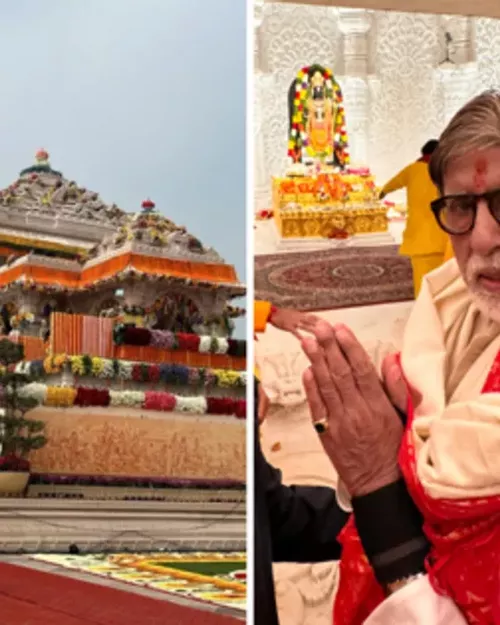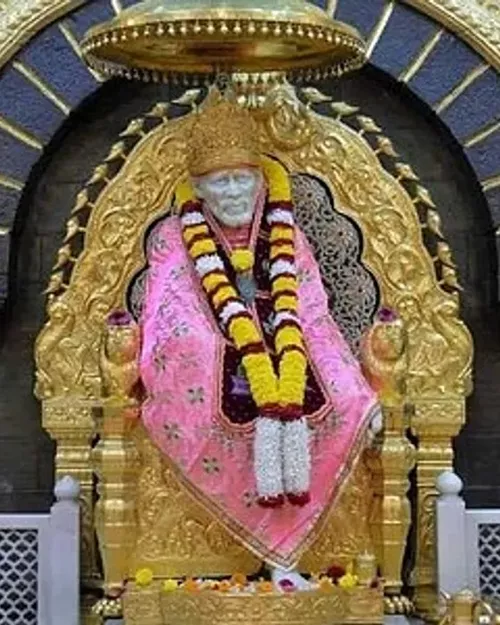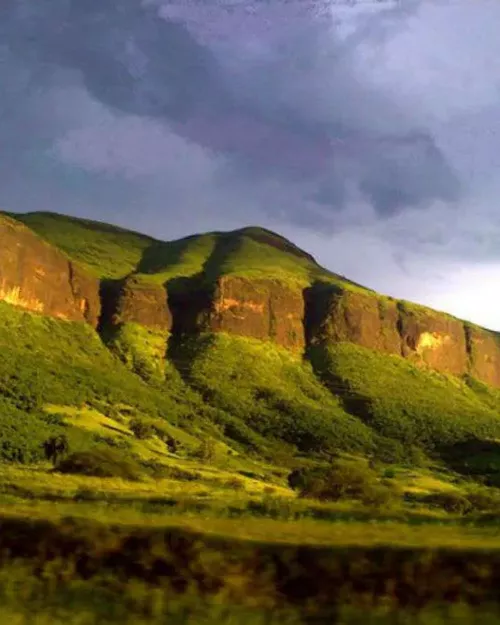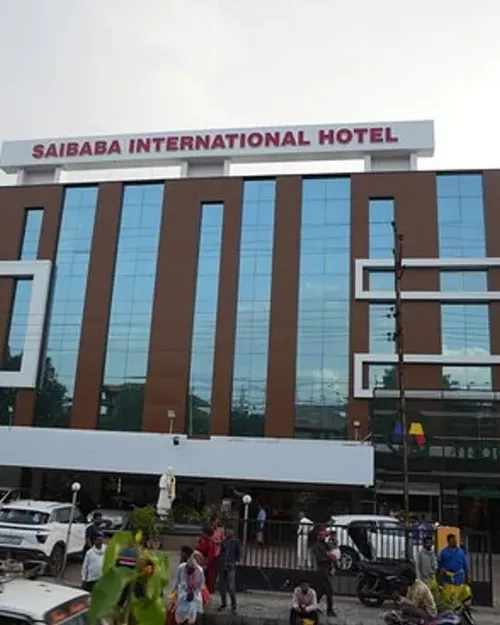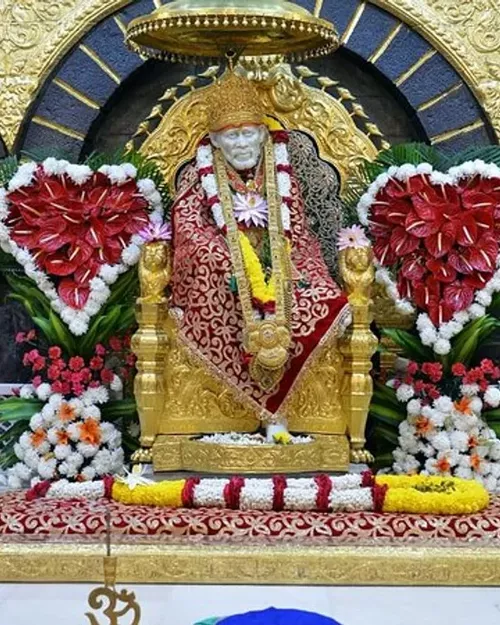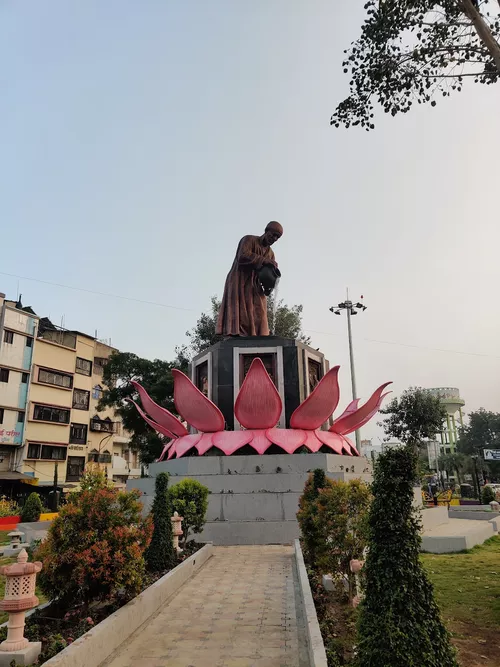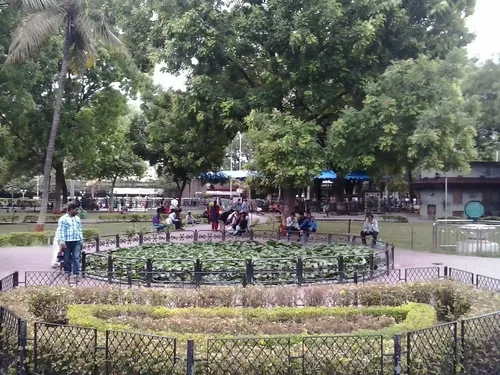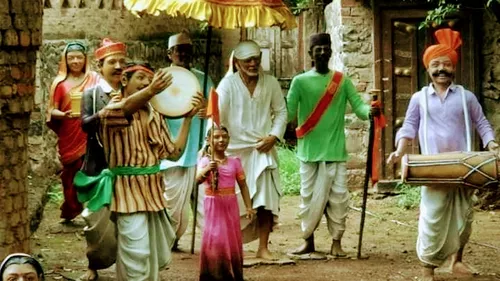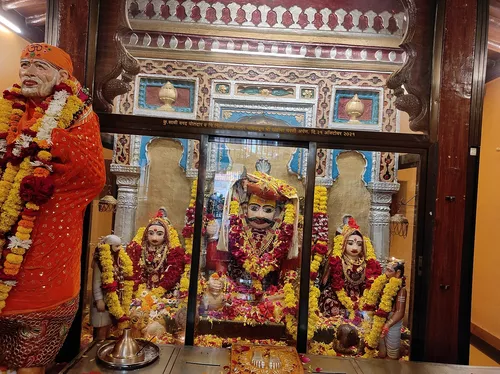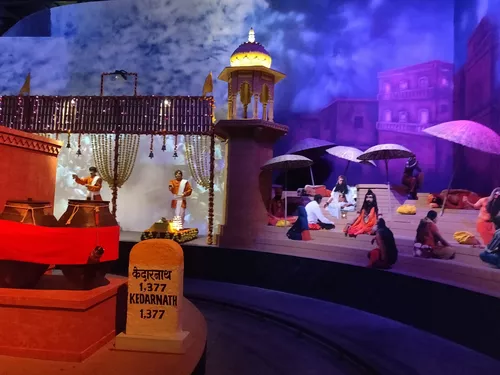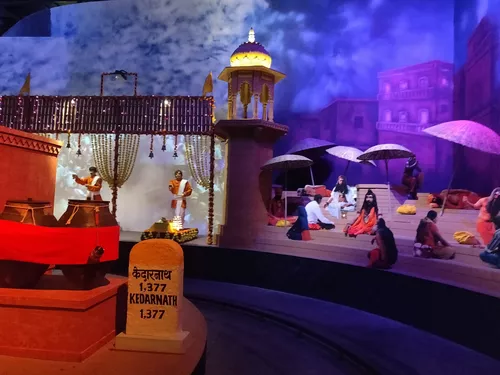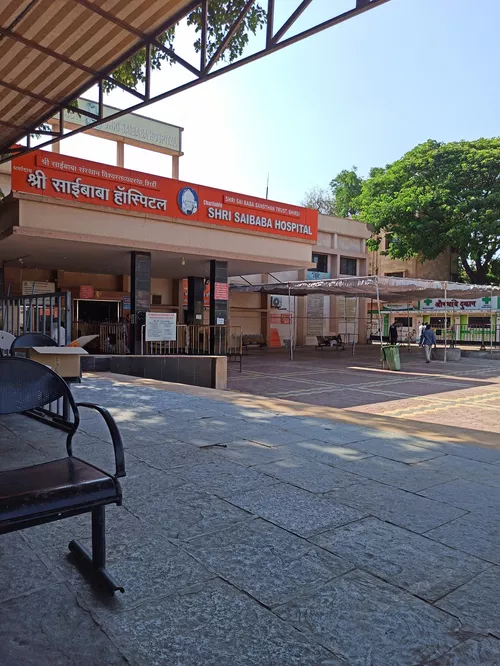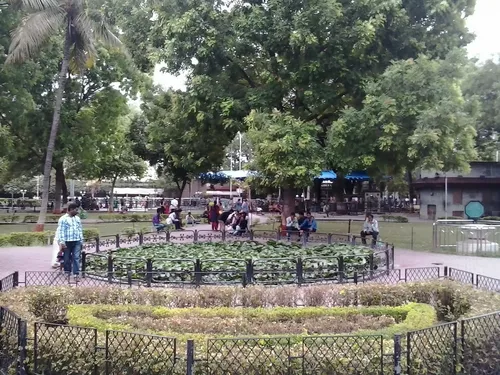Shirdi is popular for
Shirdi in next 3 month
Weather in Shirdi
December in Shirdi is cool with misty weather and moderate air quality, making it a pleasant time to visit.
Usual trip duration
A 2-3 day trip to Shirdi allows you to visit the famous Sai Baba temple, explore the peaceful surroundings, and take part in religious ceremonies. It's a perfect short getaway for spiritual rejuvenation.
Budget friendly
Ideas To Plan Your Trip
Places To Visit
Places To Eat
Frequently Asked Questions about Shirdi
The best time to visit Shirdi, the sacred town of Sai Baba, is during the winter months, from October to March. The weather during this period is pleasant and conducive for pilgrimage and sightseeing. The temperature ranges from 12°C to 30°C, making it comfortable for devotees to participate in temple rituals and explore the town. Avoiding the summer months (April to June) is advisable due to the intense heat, with temperatures often exceeding 40°C, which can make it challenging for outdoor activities. The monsoon season (July to September) brings moderate rainfall, which can also disrupt travel plans. However, some devotees prefer visiting during Guru Purnima and other festivals, regardless of the weather, to experience the vibrant celebrations.
Reaching Shirdi is convenient due to its well-established connectivity by air, rail, and road. Here's a detailed breakdown of each mode of transport:
While the Shri Saibaba Temple is the primary draw for pilgrims visiting Shirdi, the town and its surroundings offer several other attractions that are worth exploring. These sites provide a deeper insight into the life of Sai Baba and the spiritual atmosphere of the region.
- Dwarkamai:
This is the mosque where Sai Baba spent a significant part of his life. It houses the sacred Dhuni (eternal flame) that Baba kept burning, and the grinding stone used by him. Visitors can feel the spiritual energy of the place and learn about Baba's daily life.
- Chavadi:
Located near Dwarkamai, Chavadi was the place where Sai Baba alternately slept every night. Today, it is divided into two parts, one for the devotees and the other where Baba's belongings are kept. The procession of Sai Baba's palanquin to Chavadi is reenacted every Thursday, which is a significant event for devotees.
- Gurusthan:
This is the place where Sai Baba was first spotted as a young boy under a neem tree. A small shrine has been built around the tree, and it is considered highly sacred. Devotees often tie threads on the branches of the neem tree, seeking blessings.
- Lendi Baug:
A garden nurtured by Sai Baba himself, Lendi Baug is a serene and peaceful place. It houses a Nandi statue, a Datta Temple, and a continuous burning lamp (Akhanda Deep). It's a great place to relax and meditate.
- Khandoba Temple:
Located on the Ahmednagar-Kopergaon road, this temple is dedicated to Lord Khandoba. Sai Baba first arrived in Shirdi near this temple, making it an important site for devotees.
- Sai Heritage Village:
This is a theme park depicting the life of Sai Baba through various exhibits and statues. It offers an informative and engaging experience for visitors of all ages.
Visiting Shirdi is primarily a pilgrimage, but there are various activities you can engage in to enrich your spiritual journey and make the most of your trip.
- Attend Aarti:
Participate in the various Aartis (prayer ceremonies) held at the Shri Saibaba Temple throughout the day. The Kakad Aarti (morning Aarti) and Shej Aarti (night Aarti) are particularly popular. Experiencing the devotional atmosphere is a deeply moving experience.
- Visit Dwarkamai and Chavadi:
Explore Dwarkamai and Chavadi to learn about Sai Baba's life and teachings. Spend some time in quiet reflection and soak in the spiritual ambiance.
- Engage in Seva:
Offer Seva (selfless service) at the temple. This could involve helping with crowd management, cleaning, or distributing Prasad. It's a way to give back and connect with the community.
- Read Sai Satcharitra:
Reading the Sai Satcharitra, a biography of Sai Baba, can deepen your understanding of his philosophy and teachings. Many devotees read it during their visit to Shirdi.
- Meditate at Lendi Baug:
Find peace and tranquility by meditating at Lendi Baug. The serene environment is ideal for introspection and connecting with your inner self.
- Shop for Souvenirs:
Explore the local markets for Sai Baba-related souvenirs, books, and religious items. These can serve as reminders of your spiritual journey.
- Visit Nearby Temples:
Consider visiting nearby temples such as the Shani Shingnapur Temple, which is about a 1.5-hour drive from Shirdi.
When visiting the Shri Saibaba Temple in Shirdi, it's important to adhere to certain guidelines and dress codes to maintain the sanctity of the religious site and show respect for the traditions. While there isn't a strictly enforced formal dress code, modest and respectful attire is highly recommended.
- Clothing:
Devotees are advised to wear modest clothing that covers the shoulders and knees. Traditional Indian attire like sarees, salwar kameez, or kurtas are considered appropriate for women. Men can wear kurtas, shirts, and trousers. Avoid wearing shorts, sleeveless tops, or overly revealing clothing.
- Head Covering:
While not mandatory, many devotees choose to cover their heads as a sign of respect. You can use a scarf, dupatta, or handkerchief for this purpose.
- Footwear:
Footwear is not allowed inside the main temple complex. There are designated areas where you can leave your shoes before entering. It's a good idea to wear comfortable and easily removable footwear.
- Behavior:
Maintain a calm and respectful demeanor while inside the temple. Avoid loud talking, using mobile phones, or engaging in disruptive behavior. Photography is generally prohibited inside the main shrine.
- Hygiene:
Maintain cleanliness and hygiene within the temple premises. Dispose of waste properly and avoid littering.
- Following Instructions:
Pay attention to the instructions given by the temple authorities and security personnel. They are there to ensure the smooth and orderly functioning of the temple.
Shirdi offers a variety of shopping options, primarily focused on religious items, souvenirs, and local handicrafts. The area around the Sai Baba Temple is bustling with shops catering to pilgrims.
While shopping in Shirdi, it's common to bargain, especially in the smaller shops and stalls around the temple. Be respectful and courteous while negotiating. Look for items that resonate with you and serve as a reminder of your spiritual journey to Shirdi.
Shirdi offers a range of dining options to cater to the diverse tastes of pilgrims and tourists. You can find everything from simple vegetarian meals to more elaborate dining experiences.
Most restaurants in Shirdi primarily serve vegetarian food, keeping in mind the preferences of the majority of pilgrims. It's always a good idea to check reviews and ratings before choosing a restaurant. Maintaining hygiene is crucial, so opt for restaurants that appear clean and well-maintained.
Shirdi serves as a convenient base for exploring several nearby destinations that offer a mix of religious, historical, and natural attractions.
Shirdi offers a wide range of accommodation options to suit various budgets and preferences. From budget-friendly guesthouses to luxury hotels, you'll find suitable places to stay during your visit.
It's advisable to book your accommodation in advance, especially during peak season and festival times, to ensure availability and get the best rates. Consider the proximity to the temple and other attractions when choosing your accommodation. Read reviews and compare prices to find the best option that suits your needs and budget.
Shirdi is known for its vibrant celebrations of various festivals, which attract thousands of devotees from across the globe. These festivals are marked by special prayers, processions, cultural programs, and community meals. Here are some of the most important festivals celebrated in Shirdi:
- Ramnavami:
This festival celebrates the birth of Lord Rama and is one of the most significant events in Shirdi. It is celebrated with great enthusiasm and includes special prayers, processions, and cultural programs. The festival spans over several days and attracts a large number of devotees.
- Guru Purnima:
Guru Purnima is a festival dedicated to honoring spiritual teachers and gurus. In Shirdi, it is celebrated to pay homage to Sai Baba as a spiritual guru. The festival includes special prayers, bhajans (devotional songs), and cultural performances. Devotees offer their gratitude and seek blessings from Sai Baba.
- Vijayadashami (Dussehra):
Vijayadashami, also known as Dussehra, marks the victory of good over evil. In Shirdi, it is celebrated as the day Sai Baba took Samadhi (left his mortal body). The festival includes special prayers, processions, and reenactments of events from Sai Baba's life. It is a time for devotees to remember and celebrate Sai Baba's teachings and legacy.
Yes, Shirdi has adequate banking facilities and ATMs to cater to the needs of pilgrims and tourists. Several major banks have branches and ATMs located in and around the town, particularly in the vicinity of the Sai Baba Temple.
- ATMs:
You can find ATMs of various banks such as State Bank of India (SBI), HDFC Bank, ICICI Bank, Axis Bank, and Bank of Maharashtra in Shirdi. These ATMs allow you to withdraw cash, check your account balance, and perform other basic banking transactions. It's advisable to carry some cash with you, especially if you plan to shop at smaller shops or stalls that may not accept card payments. However, it's also convenient to have access to ATMs for larger expenses.
- Bank Branches:
Major banks like State Bank of India (SBI), HDFC Bank, ICICI Bank, and Bank of Maharashtra have branches in Shirdi. These branches offer a full range of banking services, including cash deposits and withdrawals, fund transfers, and foreign exchange services. If you need to perform any complex banking transactions or require assistance from bank staff, you can visit one of these branches.
Shirdi experiences a semi-arid climate with distinct seasons. Understanding the weather patterns can help you plan your visit accordingly.
- Summer (March to May):
The summer months in Shirdi are hot and dry, with temperatures often exceeding 40°C (104°F). May is typically the hottest month. It's advisable to avoid visiting Shirdi during this time if you're not comfortable with extreme heat. If you do travel during the summer, stay hydrated, wear light clothing, and avoid prolonged exposure to the sun.
- Monsoon (June to September):
The monsoon season brings relief from the heat with moderate rainfall. July and August are the wettest months. While the rain can make the weather more pleasant, it can also disrupt travel plans. The humidity levels are also high during this time. Some devotees prefer visiting during the monsoon for the lush green surroundings and fewer crowds.
- Winter (October to February):
The winter months are the most pleasant time to visit Shirdi. The weather is cool and comfortable, with temperatures ranging from 12°C to 30°C (54°F to 86°F). This is the peak season for tourism, as the weather is ideal for sightseeing and outdoor activities. It's advisable to book your accommodation and travel in advance during this time.




